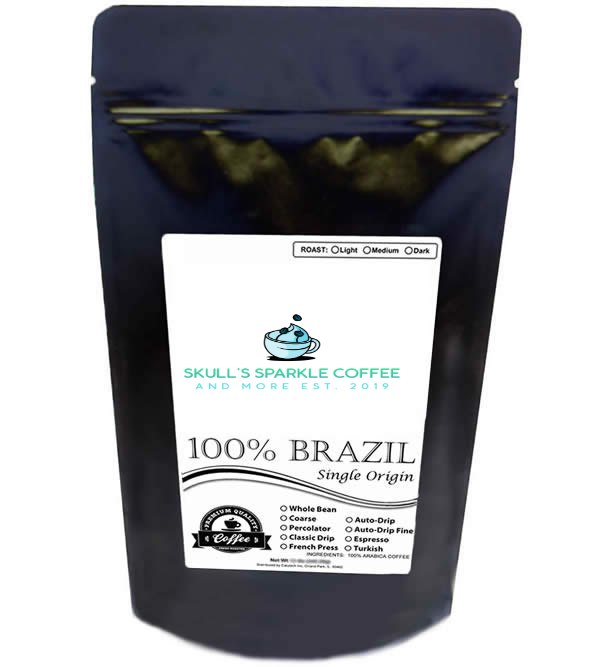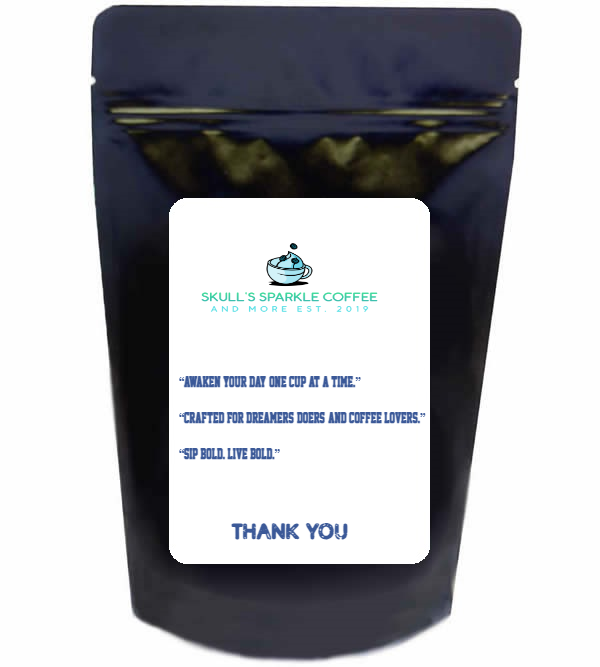SKULL'S SPARKLE COFFEE AND MORE
100% Brazil Coffee - I THE SKULL
100% Brazil Coffee - I THE SKULL
Couldn't load pickup availability
Description
Medium or dark roasted pure Brazilian coffee, single origin. Tasting notes include nutty hints and sweet chocolate. This coffee is grown at an elevation of 3,600 feet in the São Paulo state. Popular as a dark roast coffee and makes great espresso with its unique espresso flavor. Coffee was brought to Brazil in the 18th Century and for over 150 years Brazil has been the largest producer of coffee with over 10,000 square miles of coffee plants. Many Italians looking for work moved to Brazil in the early 1900’s after learning there was enormous demand for workers in the coffee fields, and much was then exported back to Italy making the coffees of Brazil very popular throughout Europe over time.
ORIGIN COUNTRIES
Brazil
Tasting notes include nutty hints and sweet chocolate. This coffee is grown at an elevation of 3,600 feet in the São Paulo state. It’s popular as a dark roast coffee and makes great espresso with it’s unique espresso type flavors. It’s also a popular blend ingredient for cold brew coffees with a malt texture. Brazil is in South America. The country is located below Colombia and to the east of Peru. Brazil is the world’s largest producer of coffee.
Ingredients: 100% Arabica Coffee.
Latin (medium-dark)
Coffee beans are roasted medium-dark for a mix of standard coffee flavor with hints of bold. This Latin American Blend features variable coffee beans blended from Brazil, Mexico, Colombia, Guatemala, Bolivia, Dominican Republic, Honduras, El Salvador and Costa Rica.
Latin American coffee refers to coffee beans that are grown in countries located in Central and South America, including Colombia, Brazil, Costa Rica, Guatemala, Mexico, Peru, and many others. These countries are known for producing high-quality coffee with distinctive flavor profiles.
Latin American coffees are typically grown in mountainous regions with fertile volcanic soil and a tropical climate, which provide ideal growing conditions for coffee trees. The coffee beans from these regions are often classified as “Arabica” beans, which are known for their delicate flavor, lower caffeine content, and higher acidity.
The flavor profile of Latin American coffees can vary depending on the specific country and region of origin. Colombian coffee, for example, is known for its well-balanced flavor with notes of caramel and chocolate, while Brazilian coffee tends to have a nutty and sweet flavor with low acidity. Costa Rican coffee is often described as having a bright, fruity flavor with a hint of citrus, while Guatemalan coffee is known for its complex, spicy flavor with notes of chocolate and caramel.
Many coffee roasters and enthusiasts appreciate Latin American coffee for its nuanced flavor profiles and high quality. In addition, the coffee industry is an important source of income for many countries in the region, and the production of coffee is often deeply ingrained in the cultural and social fabric of these communities.



